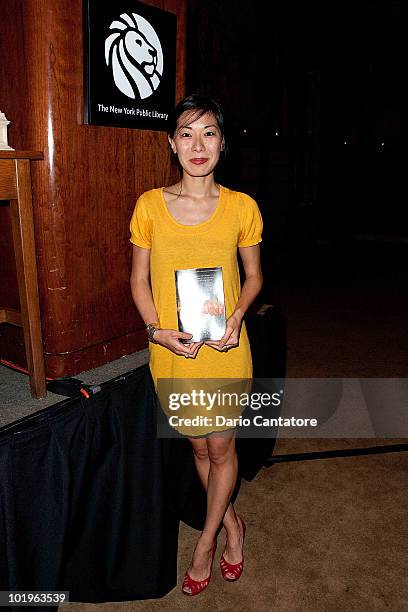David Lynch films are a fascinating journey into the surreal and the uncanny, drawing viewers into a world that teeters on the edge of familiar and strange. Known for his unique Lynchian cinema, Lynch’s masterpieces such as “Blue Velvet” and the iconic series “Twin Peaks” have left an indelible mark on both film and television history. The recent tribute at the Harvard Film Archive showcases these influential works, highlighting their impact on contemporary storytelling and cinematography. As we reflect on Lynch’s legacy, his distinctive style continues to inspire analysis and discourse, particularly in relation to the psychological complexities of his narratives. With a focus on films like “Eraserhead” and a deep dive into “Blue Velvet” analysis, audiences are reminded of the rich tapestry created by Lynch that invites reinterpretation and appreciation.
Exploring the cinematic universe crafted by David Lynch opens up a vibrant conversation surrounding his signature approach to filmmaking. His works are often celebrated as exemplary instances of unorthodox storytelling, leaving viewers with a lingering sense of curiosity and intrigue. From the disquieting charm of “Twin Peaks” to the haunting imagery present in “Eraserhead,” Lynch has undeniably shaped the landscape of modern cinema. The surreal elements intertwined with heartfelt narratives evoke a profound emotional response, inviting audiences to delve deeper into the themes of identity and reality. As film enthusiasts gather to celebrate Lynch’s contributions, the excitement surrounding screenings of his classic films proves that his artistry remains as compelling and necessary as ever.
The Impact of David Lynch’s Films on Modern Cinema
David Lynch’s films have undeniably transformed the landscape of modern cinema, infusing it with a distinctive style often dubbed ‘Lynchian.’ His groundbreaking work has disrupted traditional narrative structures, presenting storylines that are rich in symbolism and emotional depth. Films like ‘Mulholland Drive’ and ‘Blue Velvet’ are perfect examples of this radical approach, displaying an amalgamation of beauty, horror, and surrealism that challenges viewers to engage deeply with the material. This shift in cinematic language has paved the way for a new generation of filmmakers who seek to replicate that same enigmatic quality in their storytelling.
The influence of Lynch’s work extends beyond mere aesthetics; it has spurred a reevaluation of what cinema can achieve as an art form. Critics and audiences alike have noted how Lynch’s ability to juxtapose mundane reality with unsettling surrealism resonates with the complexities of contemporary life. The themes of identity and the subconscious found in Lynch’s films prompt viewers to reflect upon their own experiences and societal constructs, making each viewing a profoundly personal journey. As such, his films remain critically relevant, encouraging ambition and innovation in aspiring filmmakers.
Exploring the Dark Themes of Blue Velvet
‘Blue Velvet’ stands as a cornerstone in Lynch’s filmography, captivating audiences with its thematic depth. At first glance, the film appears to be a portrayal of idyllic small-town America, layered with vibrant colors and quaint settings. However, Lynch masterfully reveals the sinister undercurrents that lurk beneath this veneer of normalcy. The film’s exploration of darkness within the familiar resonates deeply with Freud’s concept of the ‘uncanny,’ illustrating how the shocking elements of the narrative disrupt the viewer’s sense of security. This unsettling blend of innocence and brutality forces audiences to confront the complexity of human nature.
Critics have often engaged in thorough analyses of ‘Blue Velvet,’ drawing connections to broader societal issues such as voyeurism, violence, and the dark side of the American dream. Lynch’s ability to present disturbing content while maintaining an aesthetic allure contributes significantly to the film’s enduring impact. Characters like Frank Booth serve as potent symbols of the threats hidden within both personal relationships and wider societal constructs, prompting viewers to question their own understandings of morality and identity.
The Fascination with Twin Peaks Influence
The cultural phenomenon of ‘Twin Peaks’ can hardly be overstated; it transformed television storytelling by introducing complex narratives and multi-dimensional characters. David Lynch’s visionary approach reinvented how narratives could unfold within the constraints of episodic television. His unique brand of surrealism, coupled with an engaged exploration of Americana, set a new precedent for television series that followed. Episodes often straddled the line between dark humor and profound emotional depth, making it a trailblazer in the realm of ‘quality TV.’
Moreover, ‘Twin Peaks’ has left an indelible mark on the genre of mystery and suspense, inspiring countless shows to adopt its intricate storytelling techniques. Critics and scholars alike have examined its layered narrative, making it a rich topic for analysis regarding television tropes and character development. The blend of supernatural elements with everyday life mirrors the complexities of human psychology, making the series a timeless exploration of the ‘Real’ versus the ‘Unreal.’ Lynch’s ability to create a compelling world that is both unsettling and relatable continues to influence contemporary television storytelling.
A Study of Eraserhead: The Surrealist Masterpiece
‘Eraserhead’ remains one of David Lynch’s most iconic works, celebrated for its innovative use of black-and-white cinematography and its exploration of existential themes. The film immerses viewers in a surreal landscape that blurs the boundaries of reality and nightmare. Lynch’s artistic craftsmanship is on full display; shadows, ambient noise, and unsettling imagery converge to create a haunting atmosphere that reflects the anxieties of parenthood and the human condition. This dreamlike quality allows audiences to interpret the film’s meaning in deeply personal ways, making each viewing a unique experience.
Furthermore, the film’s screening in 35 mm is often referred to as a revelatory experience, enhancing its textural richness and emotional weight. Through its bizarre visuals and haunting soundscape, ‘Eraserhead’ encapsulates Lynch’s ability to communicate complex ideas without relying on conventional dialogue. The film has become a touchstone for discussions on avant-garde cinema, exemplifying how experimental storytelling can evoke powerful emotional responses. Lynch’s masterful direction invites viewers to confront the depths of their subconscious, establishing ‘Eraserhead’ as a foundational work in both horror and art-house cinema.
The Dark Aesthetic of Lynchian Cinema
The term ‘Lynchian’ has grown to signify much more than just David Lynch’s unique style; it embodies a broader aesthetic that captures the strange and unsettling qualities of his work. This aesthetic often includes dreamlike sequences, ambiguous narratives, and themes of duality, all of which provoke viewers to confront the uncomfortable realities that lie beneath the surface of everyday life. Lynch’s ability to intertwine beauty with horror creates a dichotomy that captivates and disturbs audiences, leaving them to ponder the deeper implications of his storytelling.
Critically, Lynch’s films invoke a sense of mystery that invites endless interpretation and discussion. As viewers are often left with more questions than answers, the allure of Lynchian cinema is its capacity to resonate with fundamental fears and longings inherent in the human psyche. By constructing narratives that toy with perception, Lynch challenges audiences to reconsider their understanding of narrative structure and genre conventions, solidifying his films as significant contributions to the art of cinema.
Analyzing the Legacy of Blue Velvet
In the realm of cinematic analysis, ‘Blue Velvet’ continues to inspire discussions about its layered narrative and cultural commentary. Released in 1986, the film subverts typical expectations of a thriller by delving into the psychological and emotional components of its characters. Lynch’s incisive observations about the veneer of suburban life peel away the conventional tropes of the genre. Critics argue that the film not only defines a unique approach to the psychological thriller but also serves as a foreshadowing of Lynch’s thematic explorations in later works.
As we consider Lynch’s legacy, it is evident that ‘Blue Velvet’ holds a crucial place in the discourse of film studies. Its provocative exploration of themes like voyeurism, identity, and violence resonates with audiences to this day. The film’s artistic merit is reflected in its ability to foster dialogue about societal norms and the perception of the American dream, anchoring Lynch’s status as a filmmaker who pushed boundaries and challenged audiences to think critically about the world around them.
The Role of Film Archive in Preserving Lynch’s Work
The Harvard Film Archive’s tribute to David Lynch serves as a vital effort to preserve his cinematic legacy for future generations. By showcasing films like ‘Eraserhead,’ ‘Fire Walk With Me,’ and ‘Wild at Heart,’ the Archive not only highlights the diversity of Lynch’s oeuvre but also fosters appreciation for the artistry inherent in film preservation. Screenings of vintage prints allow audiences to experience the films in their intended form, emphasizing the nuances and visual intricacies that might be lost in digital formats.
Moreover, inviting voices like Sabrina Sutherland to discuss Lynch’s work adds a personal touch to the programming, connecting film enthusiasts with the broader narrative of Lynch’s influence on cinema. This initiative not only acknowledges the significance of Lynch’s contributions but also engages a wider audience in preserving the cultural conversations surrounding his work. The HFA’s programming thus plays a crucial role in ensuring Lynch’s films remain relevant and accessible, allowing new generations to explore the depths of his creative vision.
Cinematic Techniques in Lynch’s Films
David Lynch is renowned for his innovative cinematic techniques that elevate the sensory experience of his films. One such technique is his mastery of sound design, which plays a pivotal role in setting the mood and evoking emotions. In films like ‘Mulholland Drive’ and ‘Blue Velvet,’ sound complements visual elements to create an immersive atmosphere that draws viewers deeper into the narrative. Lynch’s use of ambient noise and unsettling soundscapes often encapsulates characters’ psychological states, making the viewer keenly aware of the tension that permeates his stories.
Additionally, Lynch’s cinematography often employs stark contrasts, with shadow and light coexisting in a way that adds depth and texture to his scenes. His distinct compositions and framing invite critical examination from viewers, prompting them to interpret the underlying emotions and themes presented. These techniques not only enhance the eeriness of the narratives but also establish a signature style that has become synonymous with ‘Lynchian cinema.’ The resulting films challenge conventional storytelling methods and engage audiences to explore the intricacies of their own perceptions.
Remembering David Lynch: An Artistic Tribute
The passing of David Lynch marks a significant moment in film history, prompting reflections on his artistic contributions and the indelible impact he has left on cinema. Celebrated for his extraordinary ability to weave the bizarre with the profound, Lynch’s unique cinematic language continues to resonate long after his death. As we engage in the retrospective analysis of his body of work, it becomes increasingly clear how Lynch has shaped not only movies but also the very essence of storytelling within the medium.
In commemorating Lynch’s legacy, film archives and institutions play a crucial role in preserving his films and fostering appreciation for his innovative artistry. As audiences gather to experience projects like the Harvard Film Archive’s tribute, they are reminded of the emotional complexity and visionary aesthetics that define Lynch’s work. This artistic tribute serves as both a celebration of his genius and a reminder of the importance of continued discourse on his contributions to the filmic landscape.
Frequently Asked Questions
What is the significance of David Lynch’s contribution to Lynchian cinema?
David Lynch is a pivotal figure in Lynchian cinema, known for his unique storytelling style that blends the familiar with the strange. His films explore the duality of human experiences, often revealing the dark undercurrents of seemingly idyllic settings. Works like ‘Blue Velvet’ and ‘Mulholland Drive’ showcase Lynch’s signature use of surreal imagery and narrative complexity, making him a cornerstone of modern film.
How did ‘Twin Peaks’ influence contemporary television and Lynchian cinema?
‘Twin Peaks’ revolutionized television by introducing a cinematic quality and complex narrative structure that had rarely been seen before. Lynch’s ability to intertwine mystery, elements of Americana, and surrealism has made ‘Twin Peaks’ a landmark series that continues to influence filmmakers and television creators, establishing a new standard for narrative depth and visual storytelling in Lynchian cinema.
What themes are explored in Lynch’s film ‘Blue Velvet’ analysis?
The analysis of ‘Blue Velvet’ reveals themes of duality, the complexity of human nature, and the juxtaposition of beauty and horror. Lynch uses a small-town setting to delve into dark psychological territories, challenging viewers to confront the unexpected truths that lie beneath the surface. The film’s exploration of naivety contrasted with terror embodies the essence of Lynchian cinema.
Why is ‘Eraserhead’ considered essential for an Eraserhead screening?
‘Eraserhead’ is essential for screening due to its groundbreaking visual style and exploration of anxiety and parenthood. Witnessing it on the big screen enhances the film’s atmospheric quality, allowing audiences to fully immerse themselves in its surrealist imagery and sound design. The film exemplifies Lynch’s ability to craft a dense, dreamlike experience that demands attention, making it a critical part of Lynchian cinema.
How does the Film Archive tribute honor David Lynch’s legacy?
The Film Archive tribute honors David Lynch’s legacy by screening significant films from his career, including ‘Eraserhead,’ ‘Fire Walk With Me,’ and ‘Wild at Heart.’ This selection showcases the evolution of his cinematic vision while allowing audiences to experience his work in its intended format: on the big screen. Such retrospectives emphasize Lynch’s impact on both cinema and television, ensuring that new generations appreciate his art.
| Key Point | Details |
|---|---|
| David Lynch’s Influence | Lynch’s unique cinematic language appeals across generations, influencing both young and old audiences. |
| Cinematic Characteristics | His films blend the familiar with the strange, creating a captivating yet unsettling experience for viewers. |
| Legacy in Television | With ‘Twin Peaks’, Lynch introduced a narrative complexity in television, blending cinematic qualities into the medium. |
| Selected Films for Screening | The Harvard Film Archive is screening ‘Eraserhead’, ‘Fire Walk With Me’, and ‘Wild at Heart’, chosen for their rich aesthetics and impact. |
| Lynchian Concept | The term ‘Lynchian’ captures his distinct style, similar to ‘Hitchcockian’, showcasing his influence on cinema’s narrative and visual language. |
Summary
David Lynch films have left an indelible mark on the landscape of cinema. Known for their striking blend of surrealism and reality, Lynch’s works, such as ‘Blue Velvet’ and ‘Mulholland Drive’, explore themes of darkness lurking beneath the surface of ordinary life. His legacy is celebrated through special screenings, emphasizing the need to experience these films on the big screen to fully appreciate their visual and emotional depth. As we reflect on Lynch’s impact following his passing, it’s clear that his unique voice will continue to influence filmmakers and captivate audiences for generations to come.










